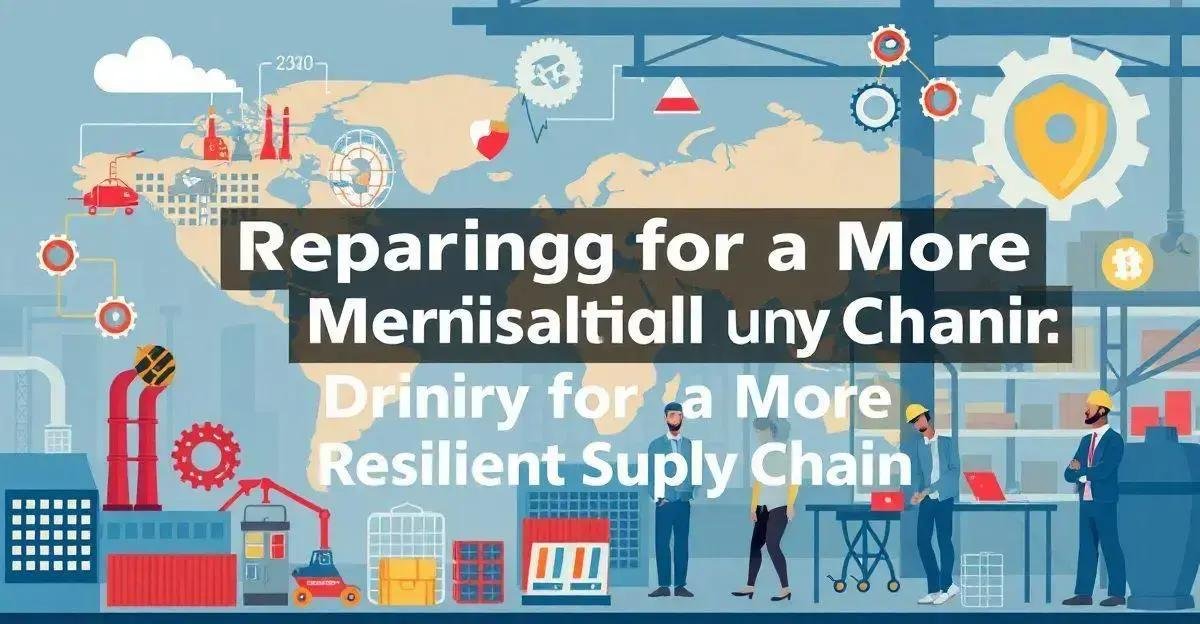As the world grapples with the effects of the COVID-19 pandemic, a new crisis has emerged: supply chain disruptions.
But what’s behind this global supply chain crisis? And how can businesses mitigate the impact of these disruptions on their bottom line?
In this article, we’ll explore the causes and effects of supply chain disruptions, and provide actionable strategies for navigating this complex issue.
Understanding the root causes of supply chain disruptions
Supply chain disruptions can be caused by a combination of internal factors, such as inadequate inventory management, inefficient logistics, and poor communication, as well as external factors, such as natural disasters, pandemics, and political unrest. For instance, a sudden shortage of raw materials due to a supplier’s insolvency can cause a ripple effect throughout the entire supply chain, leading to delays and increased costs. Understanding these root causes is crucial to developing effective strategies for mitigating the impact of supply chain disruptions.
The economic and social impact of supply chain disruptions can be severe and far-reaching. Businesses may experience significant losses due to delayed or cancelled shipments, while consumers may face shortages of essential goods. In addition, supply chain disruptions can lead to increased costs, reduced competitiveness, and even job losses. Furthermore, the social impact of supply chain disruptions can be devastating, particularly in communities that rely heavily on the affected industries. For example, a disruption to the global food supply chain can lead to food shortages and price increases, causing hardship for low-income families.
To mitigate the impact of supply chain disruptions, businesses can implement various strategies, including diversifying their supplier base, building inventory buffers, and investing in real-time tracking and monitoring systems. Additionally, businesses can adopt agile and flexible supply chain management practices, such as just-in-time inventory management and collaborative planning, to improve their responsiveness to disruptions. By implementing these strategies, businesses can reduce their reliance on a single supplier, improve their ability to respond to disruptions, and ultimately increase their resilience and competitiveness.
Preventing supply chain disruptions requires a comprehensive approach that involves identifying potential risks, developing contingency plans, and implementing proactive strategies to mitigate these risks. By understanding the root causes of supply chain disruptions, identifying potential risks, and developing effective strategies for mitigating these risks, businesses can build a more resilient supply chain that is better equipped to withstand disruptions and maintain its competitiveness in the market.
The economic and social impact of supply chain disruptions

Supply chain disruptions can be caused by a combination of internal factors, such as inadequate inventory management, inefficient logistics, and poor communication, as well as external factors, such as natural disasters, pandemics, and political unrest. For instance, a sudden shortage of raw materials due to a supplier’s insolvency can cause a ripple effect throughout the entire supply chain, leading to delays and increased costs. Understanding these root causes is crucial to developing effective strategies for mitigating the impact of supply chain disruptions.
The economic and social impact of supply chain disruptions can be severe and far-reaching. Businesses may experience significant losses due to delayed or cancelled shipments, while consumers may face shortages of essential goods. In addition, supply chain disruptions can lead to increased costs, reduced competitiveness, and even job losses. Furthermore, the social impact of supply chain disruptions can be devastating, particularly in communities that rely heavily on the affected industries. For example, a disruption to the global food supply chain can lead to food shortages and price increases, causing hardship for low-income families.
To mitigate the impact of supply chain disruptions, businesses can implement various strategies, including diversifying their supplier base, building inventory buffers, and investing in real-time tracking and monitoring systems. Additionally, businesses can adopt agile and flexible supply chain management practices, such as just-in-time inventory management and collaborative planning, to improve their responsiveness to disruptions. By implementing these strategies, businesses can reduce their reliance on a single supplier, improve their ability to respond to disruptions, and ultimately increase their resilience and competitiveness.
A supply chain disruption can have a ripple effect throughout the entire supply chain, leading to delays and increased costs. Therefore, it is essential for businesses to have a comprehensive understanding of their supply chain, including the suppliers, manufacturers, and distributors involved. By having this knowledge, businesses can identify potential risks and develop strategies to mitigate these risks, ultimately improving their supply chain resilience and competitiveness.
Strategies for mitigating supply chain disruptions
Supply chain disruptions can be caused by a combination of internal factors, such as inadequate inventory management, inefficient logistics, and poor communication, as well as external factors, such as natural disasters, pandemics, and political unrest. For instance, a sudden shortage of raw materials due to a supplier’s insolvency can cause a ripple effect throughout the entire supply chain, leading to delays and increased costs. Understanding these root causes is crucial to developing effective strategies for mitigating the impact of supply chain disruptions.
The economic and social impact of supply chain disruptions can be severe and far-reaching. Businesses may experience significant losses due to delayed or cancelled shipments, while consumers may face shortages of essential goods. In addition, supply chain disruptions can lead to increased costs, reduced competitiveness, and even job losses. Furthermore, the social impact of supply chain disruptions can be devastating, particularly in communities that rely heavily on the affected industries. For example, a disruption to the global food supply chain can lead to food shortages and price increases, causing hardship for low-income families.
To mitigate the impact of supply chain disruptions, businesses can implement various strategies, including diversifying their supplier base, building inventory buffers, and investing in real-time tracking and monitoring systems. Additionally, businesses can adopt agile and flexible supply chain management practices, such as just-in-time inventory management and collaborative planning, to improve their responsiveness to disruptions. By implementing these strategies, businesses can reduce their reliance on a single supplier, improve their ability to respond to disruptions, and ultimately increase their resilience and competitiveness.
A supply chain disruption can have a ripple effect throughout the entire supply chain, leading to delays and increased costs. Therefore, it is essential for businesses to have a comprehensive understanding of their supply chain, including the suppliers, manufacturers, and distributors involved. By having this knowledge, businesses can identify potential risks and develop strategies to mitigate these risks, ultimately improving their supply chain resilience and competitiveness.
Conclusion: Preparing for a more resilient supply chain

To prepare for a more resilient supply chain, businesses must prioritize proactive risk management and supply chain visibility. This can be achieved through the implementation of advanced technologies, such as artificial intelligence and blockchain, which can help identify potential disruptions and predict demand more accurately.
Additionally, businesses can build strong relationships with their suppliers and develop contingency plans to mitigate the impact of disruptions. By taking a proactive approach to supply chain risk management, businesses can reduce their exposure to disruptions and improve their overall resilience.
FAQ – Frequently Asked Questions about Supply Chain Disruptions
What are the root causes of supply chain disruptions?
Supply chain disruptions can be caused by a combination of internal factors, such as inadequate inventory management, inefficient logistics, and poor communication, as well as external factors, such as natural disasters, pandemics, and political unrest.
What are the economic and social impacts of supply chain disruptions?
Supply chain disruptions can have severe and far-reaching economic and social impacts, including significant losses for businesses, shortages of essential goods, increased costs, reduced competitiveness, and even job losses.
How can businesses mitigate the impact of supply chain disruptions?
Businesses can implement various strategies to mitigate the impact of supply chain disruptions, including diversifying their supplier base, building inventory buffers, and investing in real-time tracking and monitoring systems.
How can businesses prepare for a more resilient supply chain?
Businesses can prioritize proactive risk management and supply chain visibility by implementing advanced technologies, such as artificial intelligence and blockchain, and building strong relationships with their suppliers.
What are some best practices for supply chain risk management?
Some best practices for supply chain risk management include identifying potential risks, developing contingency plans, and implementing proactive strategies to mitigate these risks.
How can businesses improve their supply chain resilience?
Businesses can improve their supply chain resilience by implementing agile and flexible supply chain management practices, such as just-in-time inventory management and collaborative planning.



